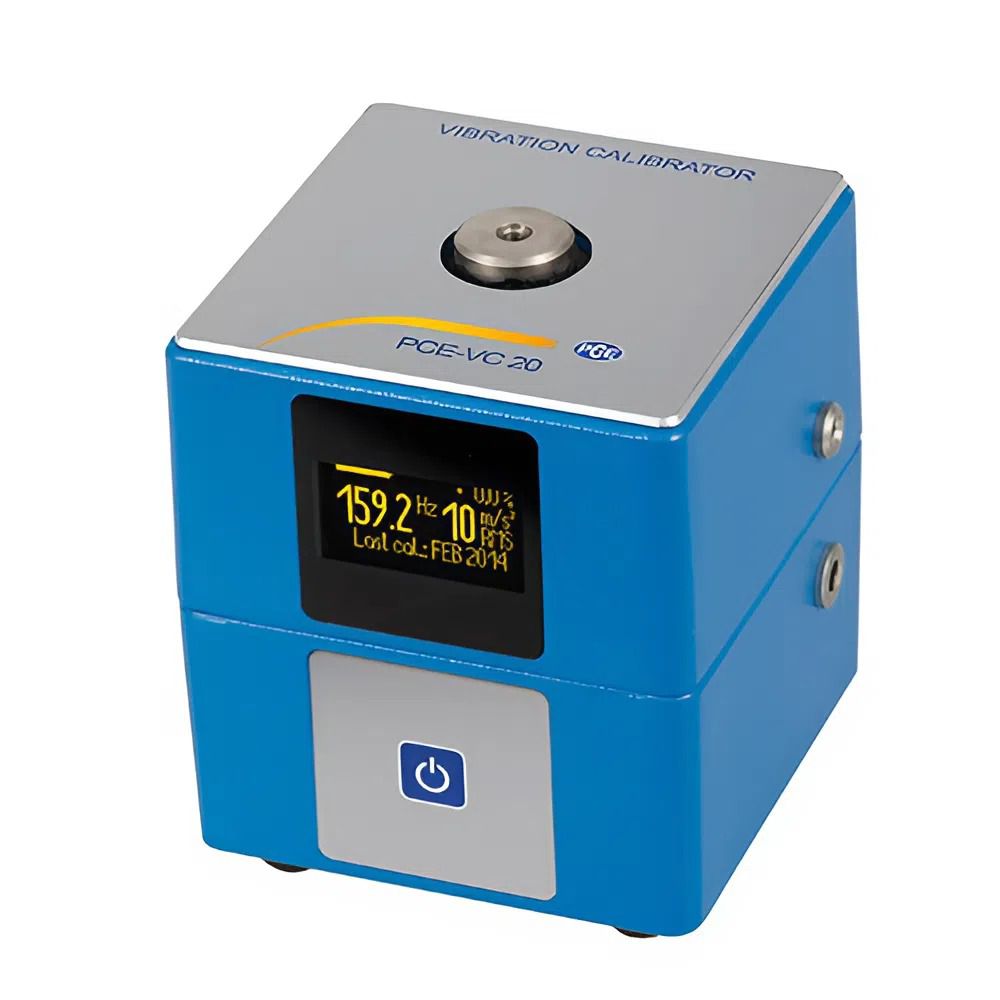Máy hiệu chuẩn độ rung MMF
Từ A-Z: Hướng dẫn sử dụng và ứng dụng máy hiệu chuẩn độ rung trong công nghiệp
Trong công tác bảo trì và giám sát tình trạng máy móc, máy đo độ rung được sử dụng để phát hiện sớm hư hỏng. Tuy nhiên, để các máy đo này đảm bảo chính xác, cần có một công cụ chuyên dụng để kiểm tra và hiệu chuẩn, đó chính là máy hiệu chuẩn độ rung. Bài viết này sẽ giúp bạn hiểu rõ vai trò, cách sử dụng và các tiêu chuẩn liên quan đến thiết bị quan trọng này.
Máy hiệu chuẩn độ rung là gì và vì sao cần thiết?
Máy hiệu chuẩn độ rung là thiết bị tạo ra dao động chuẩn với biên độ và tần số xác định. Bằng cách gắn cảm biến hoặc đầu đo rung vào máy hiệu chuẩn, người dùng có thể nhanh chóng kiểm tra độ chính xác của máy đo độ rung trước khi đưa vào sử dụng.
Tại sao cần máy hiệu chuẩn?
Đảm bảo các phép đo rung động luôn nằm trong phạm vi sai số cho phép.
Giảm rủi ro ra quyết định bảo trì sai do dữ liệu không chính xác.
Tuân thủ yêu cầu trong các hệ thống quản lý chất lượng (ISO, nhà máy sản xuất, phòng lab).
Ứng dụng phổ biến của máy hiệu chuẩn độ rung
- Trong bảo trì công nghiệp: Kiểm tra nhanh tình trạng máy đo trước khi sử dụng tại hiện trường.
- Trong hầu hết phòng thí nghiệm: Hiệu chuẩn định kỳ cho các thiết bị đo rung động theo chuẩn quốc tế.
- Trong sản xuất: Đảm bảo các máy đo rung xuất xưởng đạt đúng tiêu chuẩn kỹ thuật.
Hướng dẫn cơ bản khi sử dụng máy hiệu chuẩn độ rung
Việc sử dụng máy hiệu chuẩn khá đơn giản, bạn có thể thực hiện ngay tại chỗ. Với các dòng máy hiệu chuẩn độ rung chất lượng cao do EMIN phân phối như MMF VC21 hoặc các hãng nổi tiếng về đo độ rung hiện nay như PCE, Huatec, ACO, v.v., quá trình này chỉ mất vài phút:

Chuẩn bị thiết bị: Đặt máy hiệu chuẩn trên bề mặt phẳng, ổn định.
Gắn cảm biến: Lắp đầu dò hoặc cảm biến gia tốc của máy đo vào vị trí gắn trên máy hiệu chuẩn.
Cài đặt thông số: Chọn tần số và biên độ chuẩn (ví dụ 10 m/s² ở 159.15 Hz – giá trị tham chiếu phổ biến).
So sánh kết quả: Đọc giá trị hiển thị trên máy đo độ rung và đối chiếu với thông số chuẩn từ máy hiệu chuẩn. Nếu sai số nằm trong giới hạn (thường ±5%), thiết bị đạt yêu cầu.
Tiêu chuẩn quốc tế liên quan đến hiệu chuẩn rung động
ISO 10816: Hướng dẫn đánh giá độ rung của máy móc công nghiệp.
ISO 16063: Tiêu chuẩn về phương pháp hiệu chuẩn cảm biến và máy đo rung.
ISO 17025: Yêu cầu về năng lực của các phòng thí nghiệm hiệu chuẩn và thử nghiệm.
Một số lưu ý khi sử dụng và bảo quản
Tránh va đập, rơi rớt máy hiệu chuẩn.
Kiểm tra định kỳ pin và cáp nguồn.
Bảo quản thiết bị nơi khô ráo, sạch sẽ, tránh ẩm mốc.
Hiệu chuẩn lại máy hiệu chuẩn theo chu kỳ để duy trì độ chính xác.
Hy vọng những thông tin trên đã giúp bạn hiểu rõ hơn về tầm quan trọng của việc hiệu chuẩn máy đo độ rung. Đầu tư thời gian và nguồn lực vào quy trình này là khoản đầu tư thông minh để bảo vệ tài sản, tối ưu hóa chi phí bảo trì và đảm bảo an toàn lao động. Nếu bạn cần tư vấn thêm về máy hiệu chuẩn độ rung hoặc bất kỳ thiết bị đo lường nào, hãy liên hệ với EMIN để được hỗ trợ chuyên sâu hơn nữa nhé
-
-
-
-
-
-
-
-
-
-
-
-
-
-
-
-
-
-
-
-
-
-
-
-
